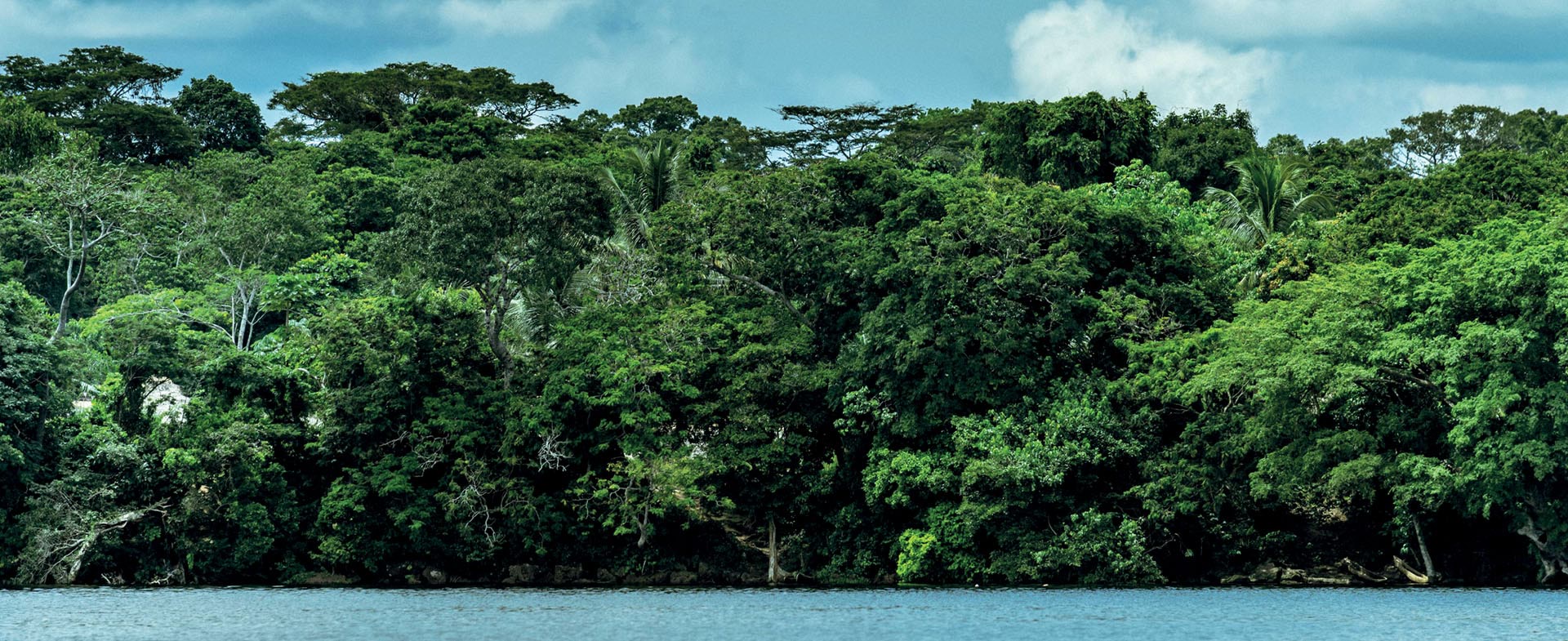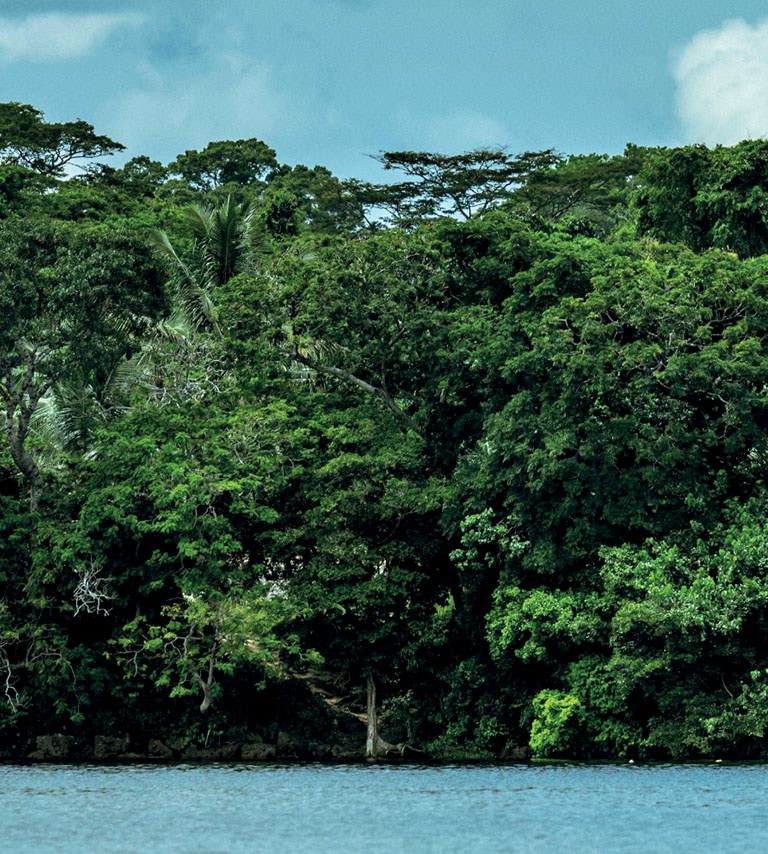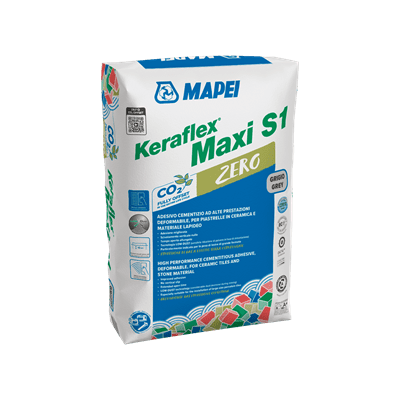

The expert's opinion
/
4/29/2024
Making sustainability part of every project
Solutions from the Zero line feature fully offset CO2 emissions. Mikaela Decio, Mapei Corporate Sustainability Manager, explains exactly what "fully offset CO2 emissions" means
Mapei, attentive to climate challenges, is committed to measuring, reducing and offsetting CO₂ emissions of its products.
This has been another abnormal winter in Southern Europe: very little snow and freezing temperatures only at an altitude of 3,500 m in February, figures we normally expect in spring. What is causing all this, as we now know, is the climate change we are experiencing, caused by Greenhouse Gas (GHG) emissions. European Union is asking its citizens to drastically reduce all emissions (expressed in terms of CO2 emissions), in order to reach a situation defined as “climate neutrality” in 2050.
With a view to reducing CO2 from the viewpoint of processes, Mapei has taken action by installing photovoltaic panels at its manufacturing plants, thereby making the transformation of raw materials into finished products even less impactful.
As far as products are concerned, since last year numerous ranges have been developed in the Research & Development laboratories, maintaining the kind of durability and quality that have always been Mapei’s hallmark while, at the same time, reducing environmental impact.
But it’s impossible to reach the “zero emissions of CO2 ”, that’s why the so called “offset of CO2 emissions” can be achieved by purchasing carbon credits. This operation balances the GHG emissions emitted during the life cycle of a product in other areas or sectors.
Measurement, reduction and offsetting: how it works
The process involves several stages:
- Measuring emissions: the Mapei Corporate Environmental Sustainability team calculates greenhouse gas emissions using the standardised LCA (Life Cycle Assessment) methodology throughout the life cycle of products from cradle to grave. The environmental impacts calculated are then verified and certified by a third party through EPDs (Environmental Product Declarations).
- Reduction of emissions: thanks to the work carried out by Research & Development laboratories, emissions are reduced through the optimisation of product formulas, the use of renewable energy sources, and the choice of local suppliers.
- Offsetting: residual emissions that cannot be reduced are offset through the purchase of carbon credits. These credits represent verified and certified emission reductions through reforestation, biodiversity protection, and renewable energy projects. There are standards and protocols for certifying the validity and effectiveness of CO2 emission reductions.
It is worth emphasising that the offset does not replace the need to directly reduce our own CO2 emissions: indeed, Mapei is continuing to pursue strategies to reduce emissions, along with the purchase of carbon credits, by drawing on reliable sources and engaging in sustainable projects.
The Zero Line
This commitment has resulted in the Zero Line: a range of products optimised by Mapei to be durable and with reduced environmental impact, whose residual CO2 emissions are totally offset.
The idea of having “zero” products is nothing new: over 10 years ago Mapei began measuring and then offsetting residual CO2 emissions associated with the manufacturing process of one of Mapei’s best-selling adhesives for ceramics, KERAFLEX MAXI S1, making it totally offset through the purchase of certified environmental credits to encourage the implementation of renewable energy projects. From 2022 onwards, the product range has been expanded: adhesives, waterproofing compounds, building mortars, mortars for concrete repair, cleaners, wall coatings, and mortars for masonry restoration. And we will not be stopping there.
But how do we choose compensation projects? Projects must have certain distinctive traits:
- they must be “intentional” (“directly human-induced”), i.e. they must be activities carried out voluntarily in the form of human (and not natural) intervention;
- they must be “additional” (additionality criterion), i.e. the reduction in emissions must be in addition to what would happen without the project;
- it must be possible to quantitatively assess the emissions that have been prevented through measurements, estimates or other officially recognised methods.
The projects must have a significant and sustainable impact on development in emerging and developing countries that goes far beyond the reduction of CO2 emissions: this kind of impact meets many of the UN SDGs (Sustainable Development Goals) for sustainable growth from a social, economic and environmental viewpoint.
All the projects chosen by Mapei are certified by third-party international bodies, which guarantee their compliance and regularly measure the emissions that have been prevented.
The Mai Ndombe project
Chosen by Mapei for 2024, the Mai Ndombe project aims to protect 300,000 hectares of critical habitat in the Congo Basin, the second largest intact rainforest in the world. This project is focused on protecting chimpanzees and elephants, reducing deforestation and investing in local communities, among the least developed in the world. The project also supports the building of schools, access to health services and food security, as well as promoting agricultural diversification and enhancing the capabilities of local communities.
The Mai Ndombe project has stopped deforestation, regenerated affected areas and promoted sustainable growth using the proceeds from the sale of CO2 emission reductions to fund local development programmes. Since its launch, the project has made significant progress in working with local communities, providing social services and protecting the environment, while enabling biodiversity and wildlife to thrive.

The Mai Ndombe project is the project chosen by Mapei for 2024 to compensate for CO₂ emissions: it aims to protect 300,000 hectares of critical habitat in the Congo Basin.
Effective offsetting
Some critics argue that carbon offsetting can be seen as an ‘easy’ option for people and businesses interested in reducing their environmental impact, but it does not address the underlying causes of carbon emissions. The US singer Taylor Swift has recently been criticised for CO2 emissions generated by her frequent flights on a private jet to watch her boyfriend Travis Kelce play for the Kansas City Chiefs. In actual fact, the pop star purchased carbon credits to offset all the CO2 emitted from her air travel, attracting the attention of her more climate-conscious fans, who complained about the huge quantity of emissions the pop star could have avoided (or at least reduced) instead of simply resorting to offsetting.
What makes CO2 offsetting effective in tackling climate change is that it is used in conjunction with significant efforts to reduce direct emissions and promote the adopting of renewable energy sources and sustainable practices: that is why Mapei’s Research & Development is constantly striving to find durable, quality products causing less environmental impact.
To regulate green claims and environmental declarations, the European Commission has published a directive to prevent misleading or deceptive advertising, ensuring that environmental claims are accurate, verifiable, and meaningful.
This makes it vital for Mapei to have an EPD (Environmental Product Declaration) for every plywood product: these environmental declarations are, in fact, certifications based on the standardised LCA (Life Cycle Assessment) scientific methodology.












